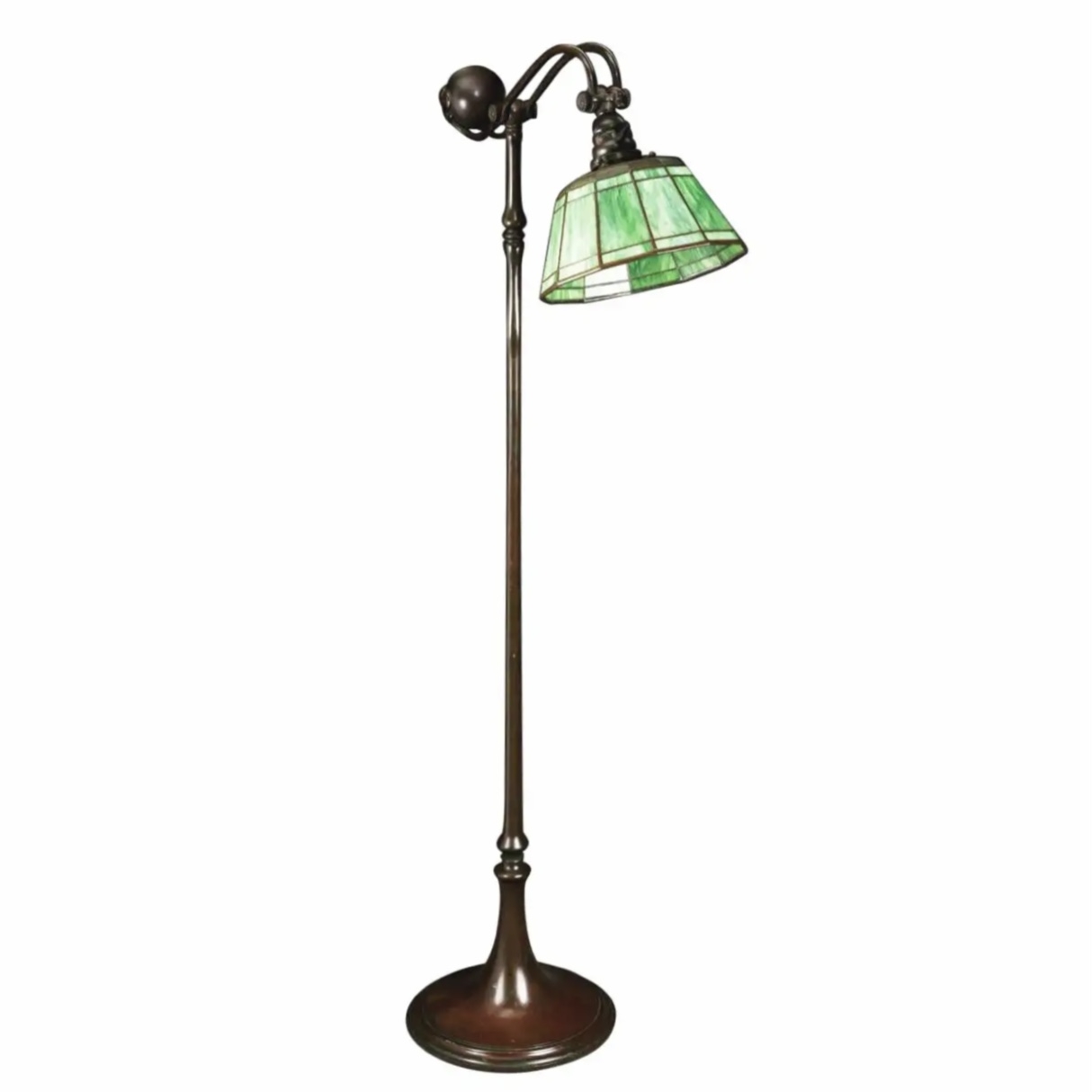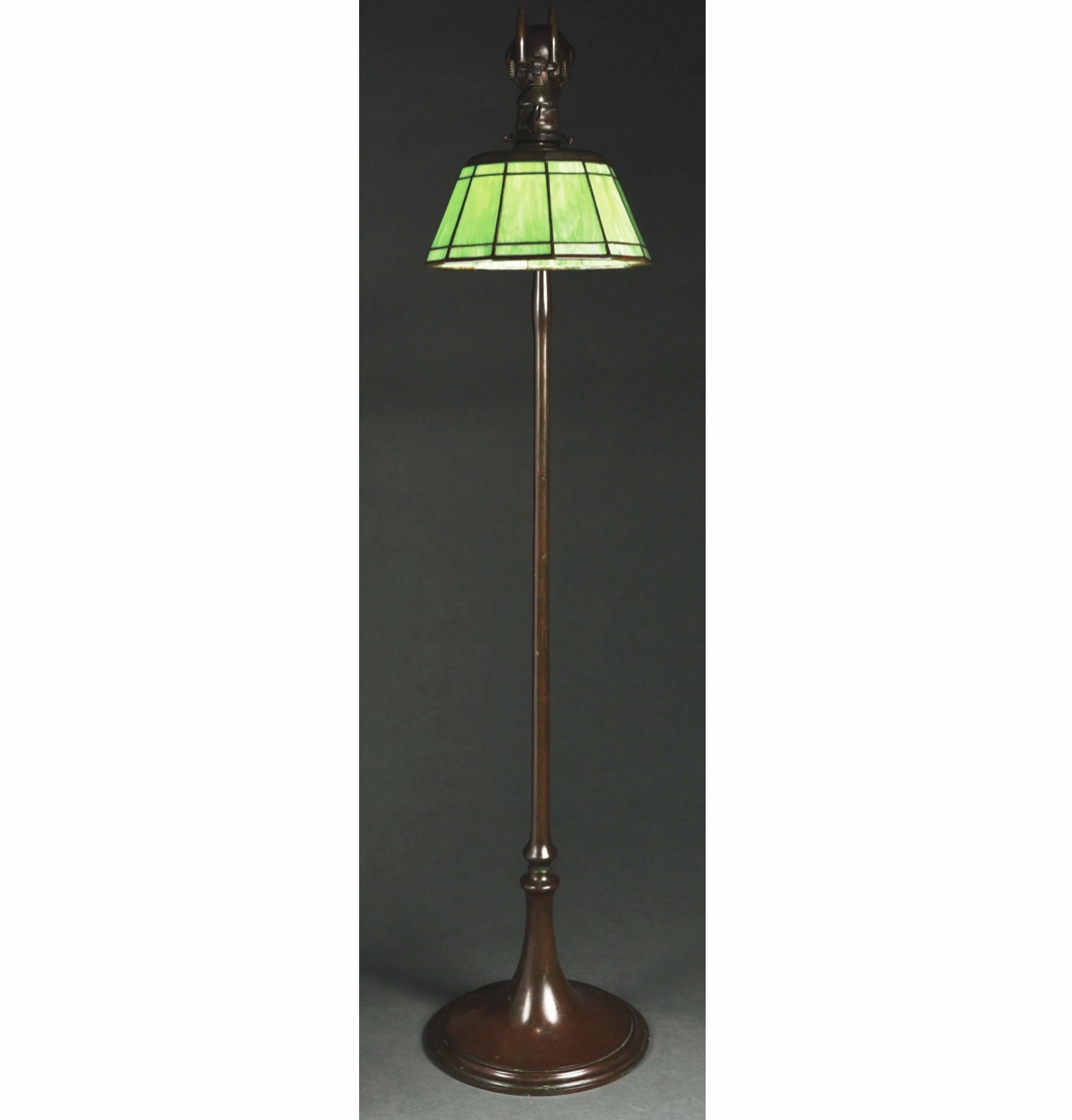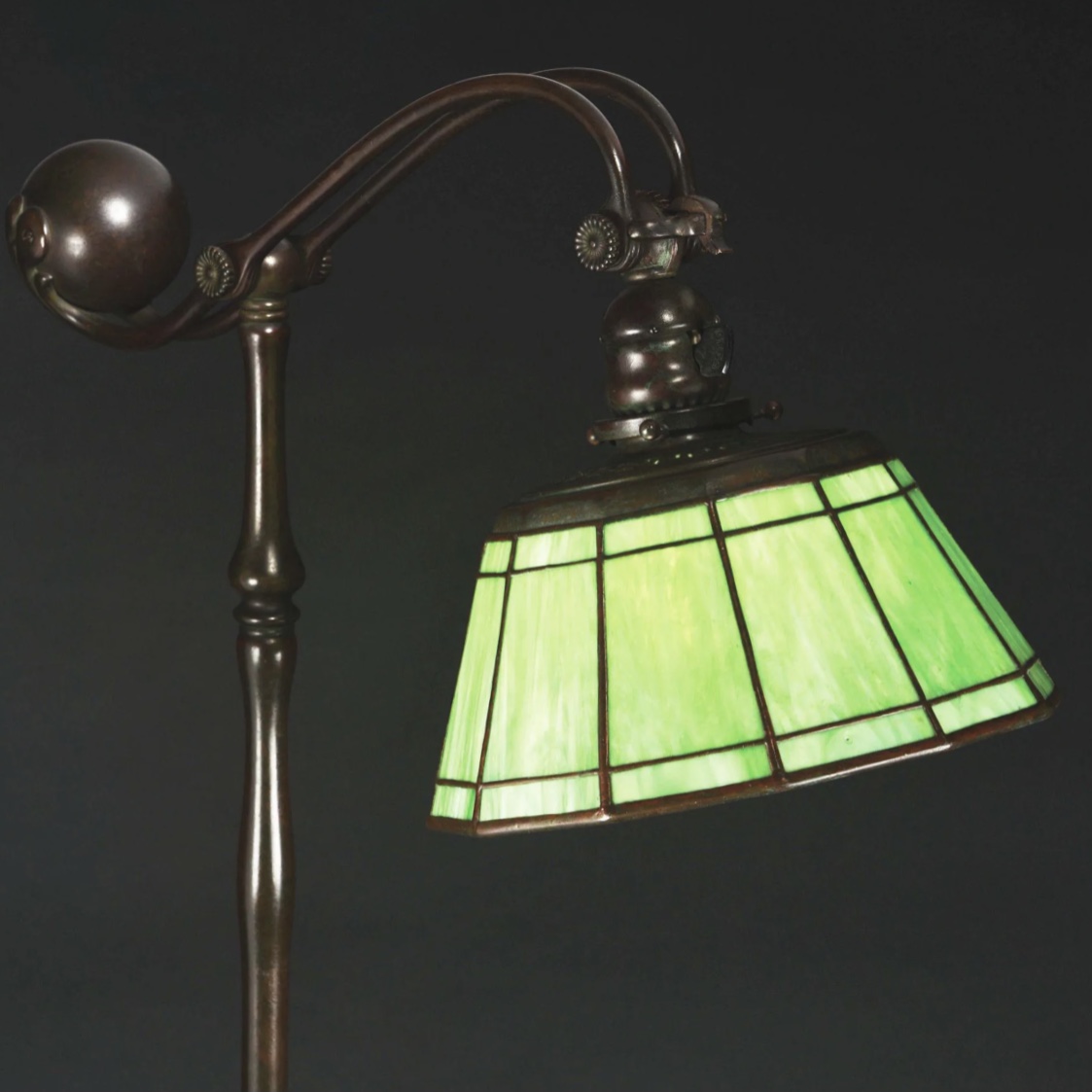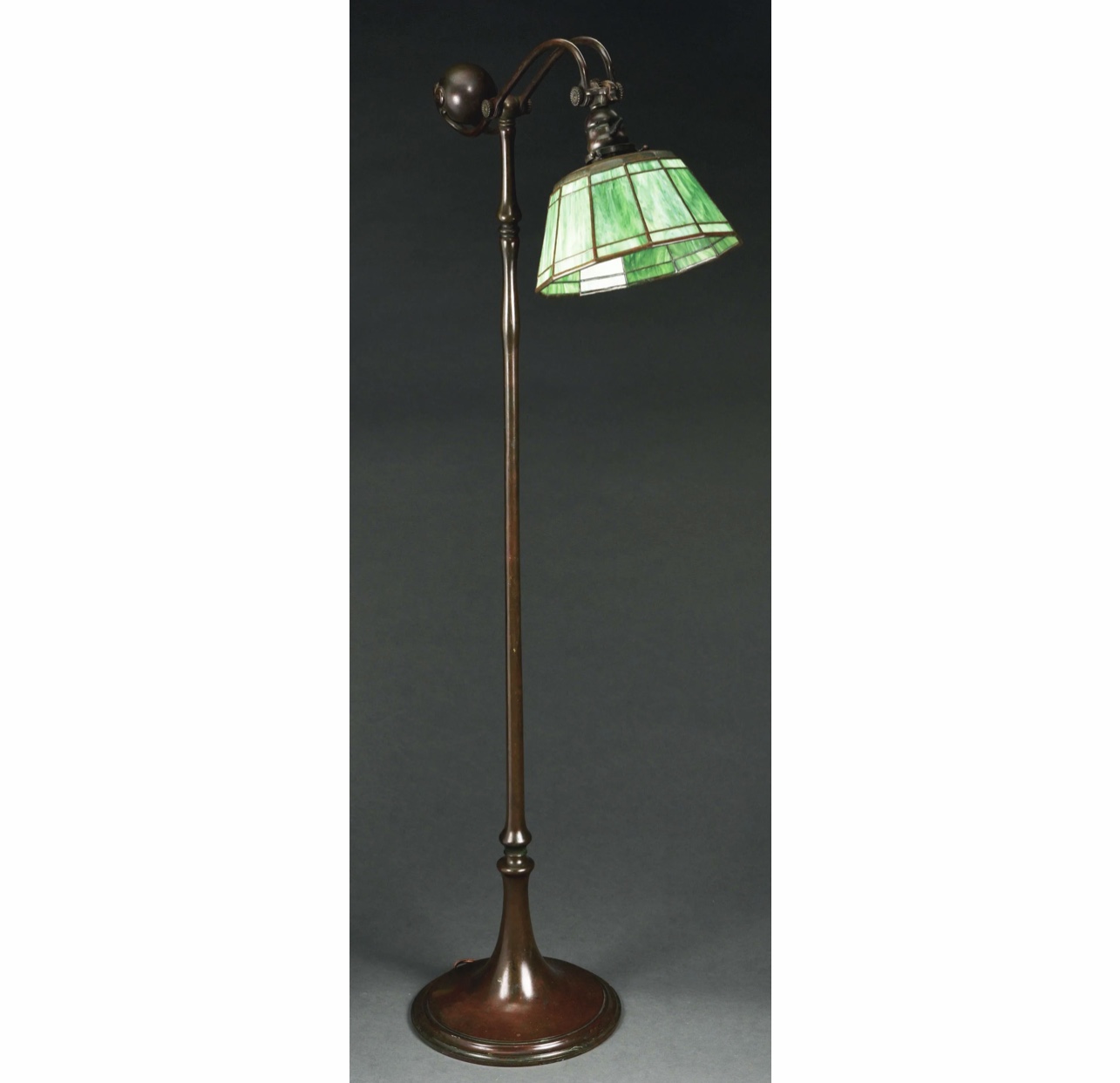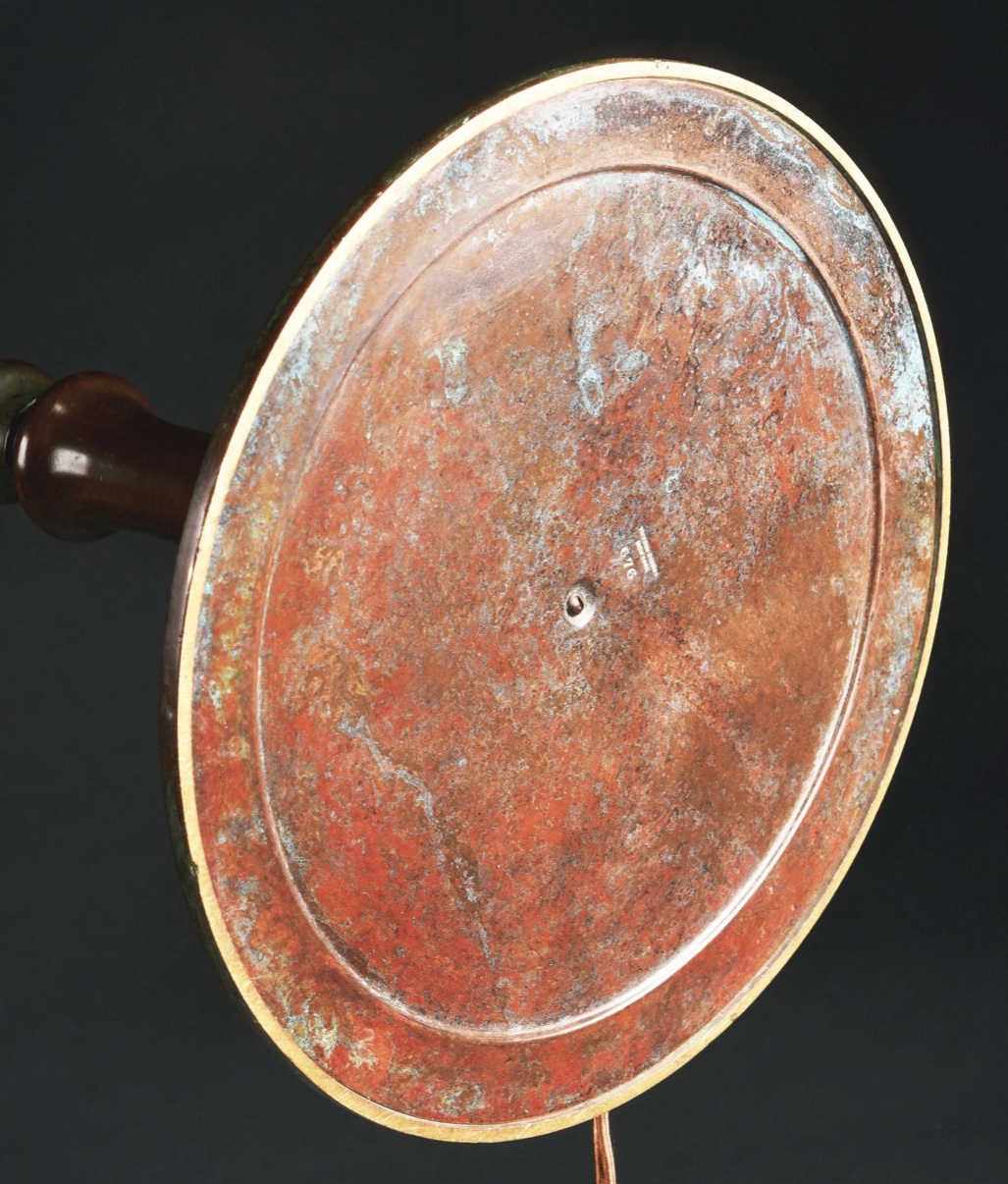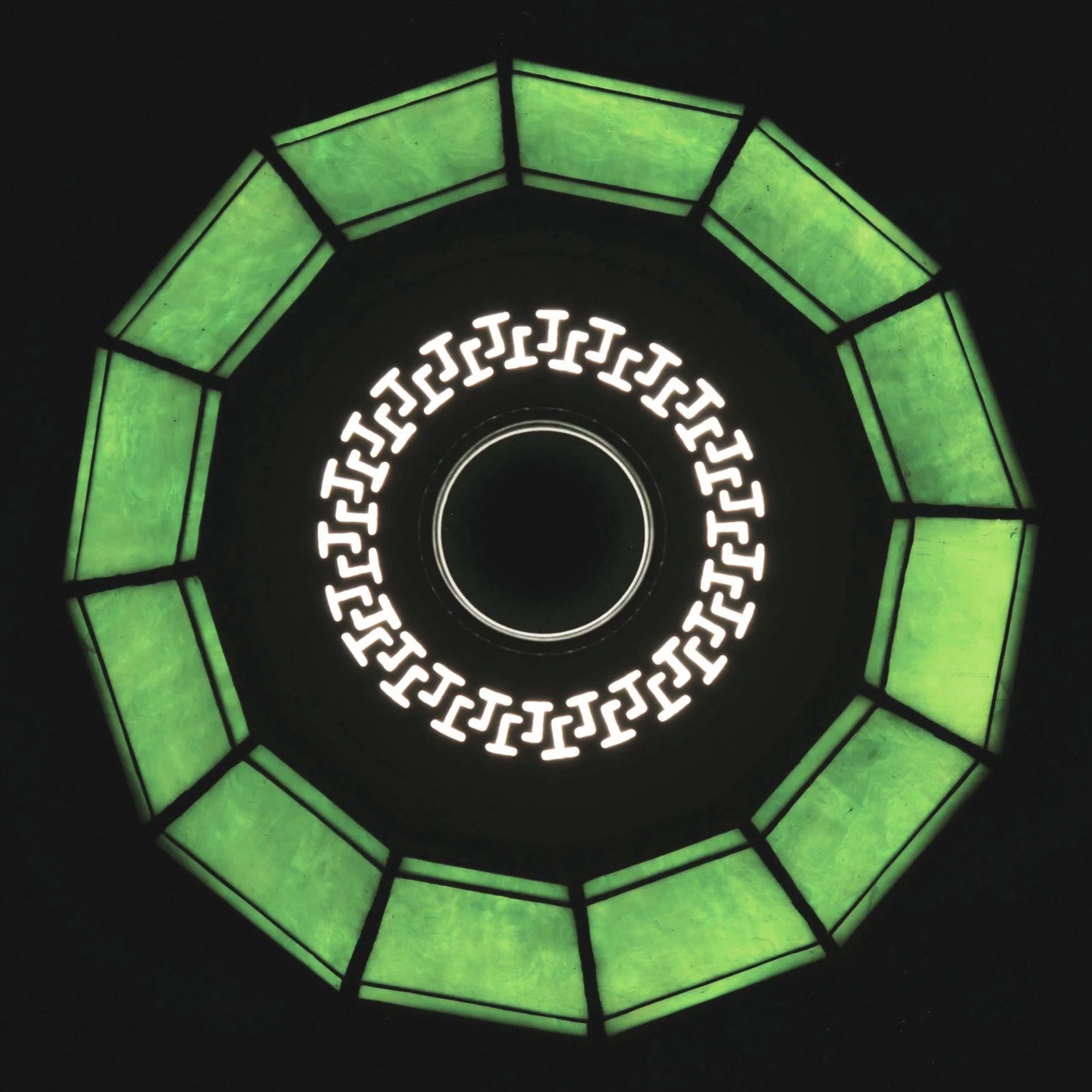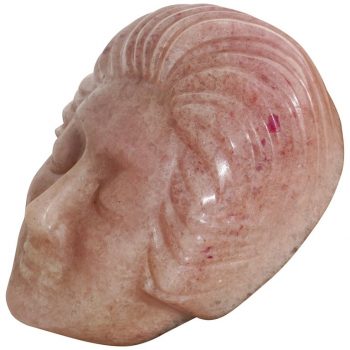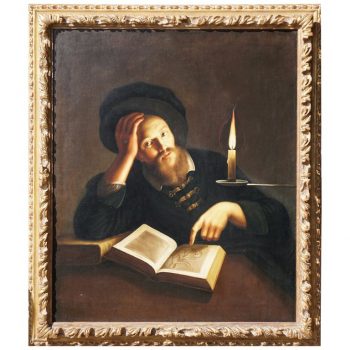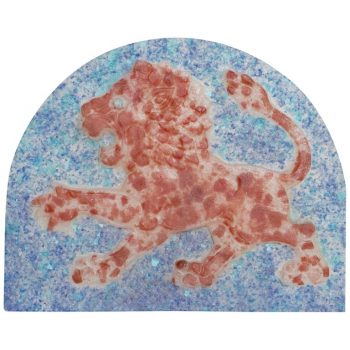Description
A Tiffany Studios counter balance floor lamp with a leaded green slag glass shade. Shade is 12 sided, each side with a large central panel, and smaller panel above and below. Top of shade in patinated bronze with pattern of “J” shaped fenestrations. Shade measures 9 – 1/2” in diameter. Condition: Excellent, free of any cracks, breaks, chips or repairs. Signed “Tiffany Studios New York 1963”. The base is a bronze Tiffany Studios counterbalance floor base, with a reddish-brown patina. The base currently stands 56” tall. Both ratchet socket and socket arm are adjustable (both function flawlessly). The base is in excellent condition with no breaks, dents, or appreciable loss to patina. Underside is signed “Tiffany Studios New York 676”.
AVANTIQUES is dedicated to providing an exclusive curated collection of Fine Arts, Paintings, Bronzes, Asian treasures, Art Glass and Antiques. Our inventory represents time-tested investment quality items with everlasting decorative beauty. We look forward to your business and appreciate any reasonable offers. All of our curated items are vetted and guaranteed authentic and as described. Avantiques only deals in original antiques and never reproductions. We stand behind our treasures with a full money back returns if the items are not as described.
Tiffany was the president and art director, the primary figure driving all production, artistically and technically. Tiffany, of course, was the son of Charles Lewis Tiffany (1812-1902), founder of the successful and influential jewelry firm, Tiffany & Co. Louis Tiffany advanced his reputation by his own name and his father’s. Tiffany once reportedly stated: “Go after the money there is in art, but the art will be there just the same.” These words are the sentiment of an artist who created a marketing machine, but who in the end allowed the artistic side to rule.
Louis Tiffany’s financial backers, mainly his father, were called upon time and again to keep his companies solvent. His familial ties facilitated prominence at international expositions, a decided advantage for a young artist with big ambitions. His firms always exhibited aside Tiffany & Co. Louis Tiffany, therefore, was able to enhance the marketability of his own wares by capitalizing on the Tiffany name established by his father. Louis Tiffany’s studio system was not a simple enterprise; he needed specialized workers to accomplish his goals. Under Tiffany’s watch, teams of talented designers and craftspeople translated his all-encompassing vision into the beautiful objects blown-glass vases, leaded-glass windows and lamps, pottery, jewelry, and more, that captivated an era. He publicly credited a number of these individuals for their work. In the Synopsis of the Exhibit of the Tiffany Glass and Decorating Company from the World’s Columbian Exposition in 1893, for example published by Tiffany Glass and Decorating Company and freely distributed Will H. Low (1853-1932) and Lydia Emmet (1866-1952) are cited beneath pictures of their designs. Other important designers at Tiffany’s company included Frederick Wilson (1858-1932), Joseph Lauber (1855-1948), Edward P. Sperry (d. 1925), Agnes Fairchild Northrop (1857-1953), Alice Carmen Gouvy (circa 1870-1924), and Clara Driscoll (1861-1944).
Neither Tiffany Studios nor the Tiffany companies preceding it were created to function as guilds where individual artists are equally recognized. They were designed in the historic tradition of studios that produced works under the name of an established artist. Providing a portrait of Tiffany’s career, including his companies, is complicated. Scholars rely on surviving business records and personal accounts of individual employees to glean facts and insights. The discovery in the early 2000s of a Trove of letters written by Clara Driscoll, a talented designer who supervised the Women’s Glass Cutting Department for Tiffany, has provided invaluable new information about aspects of production at Tiffany Studios. Still, one employee cannot tell the whole story. Tiffany created his studios under a specific design theory one based on his own ideals but under which he encouraged designers to interpret creatively. In addition to his supervision, evidenced in signatures on designs and personal accounts of his visits out to the glasshouse in Corona, New York, he maintained a design file to provide inspiration for the designers. The files included photographs of works created early in his career, of historic monuments of personal interest to Tiffany, and of sights and objects from his travels. With these measures in place, Tiffany secured the unity and quality of overall production of his companies.
Please also consider Avantique’s eclectic Art Glass and Pate De Verre collection including Emile Galle, Daum nancy, Schneider, Argy Rousseau, Almeric Walter, D’Argental, St Louis, Decorchemont and Louis Comfort Tiffany Studios. We strive to collect the highest quality Glass pieces in exceptional condition


